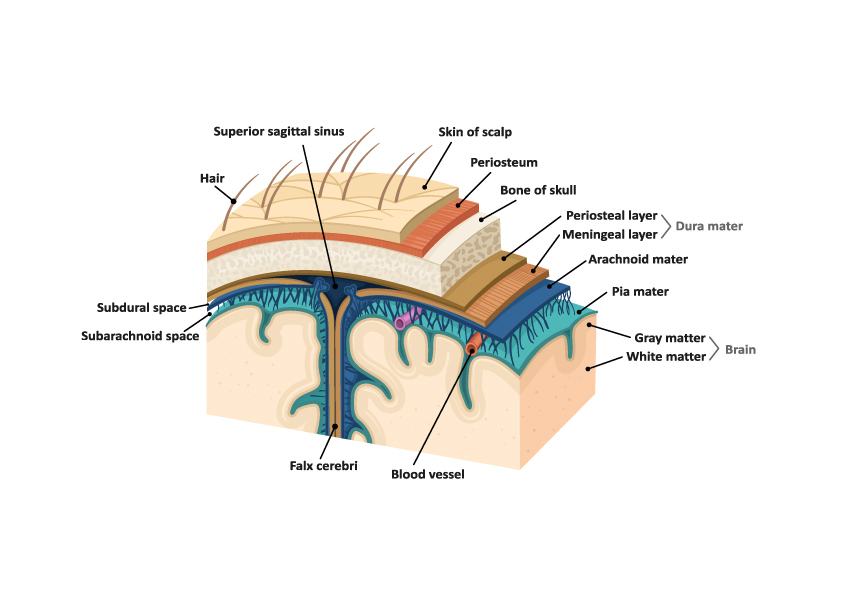Many sound healers will use unweighted tuning forks off the body around the head to affect neurons in the brain. The single greatest challenge when using unweighted tuning forks in the air around the head is the way sound travels through differing densities of materials.
The vibrations traveling away from an unweighted tuning fork follow the physics of acoustics and Newton’s Laws of Motion. The tines of the tuning fork push against molecules or physical particles to travel in compression waves in a spherical pattern away from the fork through air as its medium. When those sound waves reach a layer of differing density (i.e. water, skin, wood, metal) the waves will either pass through the layer, reflect into a different direction, or scatter in several directions depending on the smoothness of the surface. Sound vibration is also affected by friction between molecules while traveling through each medium. All of these things will reduce the loudness or intensity of the vibrations leaving the tines of a tuning fork and eventually reduce to a strength incapable of further molecule movement.
We usually learn a lot about acoustics from engineers designing rooms with good sound quality, researchers focusing on enhancing incoming sound for hearing impaired, and for sound navigation and ranging (SONAR) where I first learned about the physics of acoustics in the Navy. The study of sound travel through human tissue is also studied in great detail in the ultrasound diagnostics and therapeutic community where density of each tissue layer is very important for finding the right frequency and angle to determine distinct edges of each layer of tissue within the body. Here is where we can learn a lot about the way our tuning forks transmit through the various layers of the body.
Unfortunately, it doesn’t take very long to find the inherent challenge facing the use of unweighted tuning forks to affect brain tissue and neurons for the purpose of entrainment of a tuning fork frequency to the synchronized firing of neurons in a wide area of the brain.
According to the textbook Neuromuscular Ultrasound (2011 Saunders), the loss of sound intensity or strength is greatest where the sound speed of the two tissue layers are different. The higher the difference in tissue layer sound speed the greater the reflection of sound and less sound continuing to travel through the layer boundaries. In other words, most of the sound waves bounce off the edge of a layer if the density is much higher than the first layer.
In chapter one of the ultrasound textbook, a table of sound speeds in different densities show us the following: Air (331m/s), Fat (1450m/s), Water (1540m/s), Human soft tissue or fascia (1540m/s), Muscle (1585m/s), Tendon (1650m/s), and Skull Bone (4080m/s). We often see references to the fact that sound travels faster in water than in air, but that is not necessarily a good thing for unweighted tuning forks and practitioners attempting to pass vibrations through each distinct layer.
As you can see from the sound speed numbers, there is a huge difference between the speed of sound in air compared to skull bone. There is also a very large difference between the densities and sound speed of air (331m/s) to the first layer of skin (1540m/s) where the first reflections and vibration loss begins to substantially reduce.
As you can see from the attached image, sound vibration must make its way through several layers of the head including the outer skin, small layers of fluid and fat, the skull bone, and more layers of fluid. All of these layers have such differing densities and sound speed that there is a statistical impossibility for an unweighted tuning fork starting with a typical strength of 65 decibels held one inch from the head to reach the brain tissue before being reduced to an usable level. Most practitioners hold the tuning fork much further away from the head at several feet which further reduces the starting strength as the sound travels through the air.
Based on the information presented here, we recommend focusing on using the auditory system to bring sound vibration into the brain while taking advantage of the monaural and binaural processing systems already inherent to the brain. Sound healers can still take advantage of the vibrational sensations detected by the various nerve endings under the skin capable of detecting vibration. Using the unweighted tuning forks near the scalp will still pass into the first layers and the strength of vibration is still strong enough to affect nerve endings.


